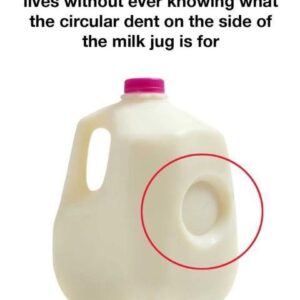For millions of American families who rely on food assistance to stretch their grocery budgets, big changes are on the way — and many may feel the impact sooner than expected. Starting this November, new rules will begin rolling out under the One Big Beautiful Bill Act, altering who qualifies for SNAP and how benefits are distributed. With grocery prices still high and household costs rising nationwide, the timing has many worried. Lawmakers describe the overhaul as a move toward accountability and self-sufficiency, while advocates warn that vulnerable families could face greater risk of food insecurity.
According to the Congressional Budget Office, the program will see $187 billion in funding reductions between now and 2034 — the largest shift to food assistance rules in decades. Key updates include stricter work requirements, eligibility restrictions, and a shift in administrative costs from the federal government to states. One of the most significant changes expands the work requirement age from 18–54 up to 64, meaning older adults who once qualified without work hours will now need at least 80 hours per month to maintain long-term benefits. Some exemptions remain for medical limitations, but several protections for groups like homeless individuals, veterans, and those who aged out of foster care have been removed.
Critics say that this change alone could push thousands of older adults into hunger. Many Americans in their early 60s are still recovering from layoffs during the pandemic, facing chronic health conditions or caregiving duties that make steady employment difficult. Under the new rules, these individuals will have to document consistent work or risk losing their benefits entirely. SNAP administrators in several states have already expressed concern that verifying and enforcing new work rules could overwhelm systems that are already stretched thin.
The law also tightens restrictions on eligibility for immigrants, limiting access primarily to U.S. citizens and lawful permanent residents. This means many mixed-status families — where some members are citizens and others are not — may see reduced household benefits. Advocacy groups warn that children in these families, who are often U.S. citizens themselves, could suffer most. “When one parent loses access, the whole household’s food supply is affected,” said Maria Gonzalez, director of the nonprofit Feeding Our Neighbors. “This isn’t about personal responsibility — it’s about survival.”
Another major change comes from how benefit levels are calculated. The law freezes updates to the Thrifty Food Plan — the formula used to determine SNAP amounts — until 2027. Previously, the plan could be revised to reflect changes in food costs, but the new rule locks it in and requires future updates to be “cost neutral,” preventing benefits from automatically rising as grocery prices climb. For families already struggling to keep up with inflation, this could mean that assistance buys less with each passing year.
States will also gradually be required to shoulder a larger share of the administrative costs of running SNAP. Currently, these costs are split roughly evenly between the federal government and the states, but under the new system, state governments will take on a greater percentage each year. Officials in high-population states like California, Texas, and New York have warned that such shifts could strain already tight budgets. Some expect that local policymakers might respond by limiting optional SNAP extensions or cutting complementary state food programs.
Supporters of the reform argue that the changes are long overdue. Representative James Ellison (R–MO), one of the bill’s co-sponsors, called the reforms “a necessary course correction” to ensure the program remains “fiscally sustainable and focused on work readiness.” He pointed to reports of improper payments within SNAP — totaling an estimated $11 billion last year — as evidence that the system needs tightening. “We can’t have a safety net without accountability,” Ellison said. “These reforms reward work, reduce waste, and encourage independence.”
But for those on the ground — the social workers, food banks, and case managers — the reality is more complicated. Many states are still coping with record demand at food pantries. The USDA reports that more than 12% of U.S. households experienced food insecurity in 2024, a jump from 10.5% in 2022. “We’re already seeing families coming in earlier and more often,” said Karen Thompson, a food pantry director in Ohio. “If these changes roll out as written, we’re bracing for a new wave of need by spring.”
SNAP, officially known as the Supplemental Nutrition Assistance Program, serves over 41 million Americans each month. It was designed not only to combat hunger but also to stabilize local economies by supporting grocery and farm supply chains. Every dollar spent on SNAP generates an estimated $1.50 in economic activity. Economists warn that sudden benefit reductions could ripple outward — lowering demand in small-town grocery stores, reducing farm produce orders, and hurting regional food suppliers.
As implementation begins in November, states will need to update their eligibility systems, retrain caseworkers, and notify households of the new rules. For many recipients, that means receiving confusing letters or short deadlines to prove work hours, citizenship, or income changes. “We anticipate a lot of accidental disenrollments,” said a state administrator from Michigan. “People will miss a form, fail to verify a schedule, and suddenly their benefits stop.”
While the federal government has allowed a brief grace period through early 2026 for full compliance, most states are moving quickly to enforce the new standards. Some, like Florida and Arkansas, have already begun early implementation, citing reduced dependency rates as a success. But early data also show sharp increases in food pantry visits in those same regions — suggesting that while SNAP rolls may shrink, hunger is not.
For families who depend on food assistance, the coming months will bring both uncertainty and urgency. Community organizations are preparing emergency outreach programs to help recipients navigate the new rules, offering document support and legal advice. Faith-based charities, already stretched by high demand, are coordinating with regional food banks to fill expected gaps. “It’s not a matter of if, but when, people start losing access,” said Gonzalez. “We just hope we can catch them before they fall too far.”
The One Big Beautiful Bill Act has also sparked renewed debate about how the U.S. defines “self-sufficiency.” Supporters argue that expanding work requirements motivates participation in the labor force and ensures fairness to taxpayers. Opponents counter that the real issue lies not in effort, but in opportunity — with wages lagging far behind living costs, especially in low-income and rural areas. “Work doesn’t guarantee stability anymore,” said Thompson. “A full-time job at minimum wage still can’t cover rent, gas, and groceries in most cities.”
The coming winter could serve as an early test of how resilient America’s safety net truly is. As colder months increase heating costs and reduce seasonal employment, families relying on SNAP may have to make painful choices — between paying utility bills and putting food on the table. For many, the new rules will feel less like reform and more like retreat.
By next year, lawmakers will face growing pressure to revisit portions of the bill, especially if hunger metrics spike. For now, both sides are watching closely: advocates bracing for fallout, and supporters hoping for proof that tighter rules lead to stronger outcomes. What happens over the next 12 months may determine not just the future of SNAP, but the broader question of how America cares for its most vulnerable in times of hardship.
Because in the end, this debate is about more than budgets and bureaucracy — it’s about dignity, stability, and the promise that no one in the world’s wealthiest nation should go hungry.





